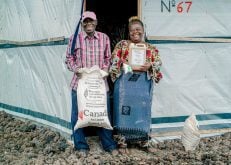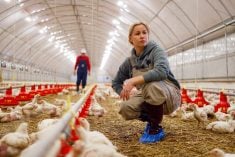While offering praise for the federal government’s work on negotiating trade agreements, commodity groups also questioned one noticeable omission.
Cameron MacKay, director general of the Trade Negotiations Bureau at Canada’s Department of Foreign Affairs, Trade and Development, recently provided an update on Canada’s FTA negotiations.
He told delegates attending the 2014 Saskatchewan Agriculture Trade Summit that Canada has 11 agreements in force and is in ongoing negotiations on another 11.
That prompted a question from the audience.
“I can’t help but to notice that China is not on the list,” said Jim Everson, vice-president of government relations with the Canola Council of Canada.
Read Also

Bunge sells assets per merger approval
Bunge has sold five western Canadian elevators as required under the federal approval for its merger with Viterra.
MacKay said China is a trading partner that can’t be ignored. In fact, it is Canada’s second biggest partner behind the United States.
There has been an ongoing dialogue with the Chinese government and there are trade commissioners on the ground to support Canadian exporters. But there are hurdles when it comes to negotiating an FTA with the economic powerhouse.
“China is really unique. It presents challenges that no other economy and no other nation presents to Canada,” said MacKay.
Patti Miller, president of the Canola Council of Canada, said the government is doing a good job on negotiating deals but she said bilateral trade discussions with China have been on the backburner while the Canadian government focuses on the Trans-Pacific Partnership (TPP) agreement.
She thinks it is time to take the next step and start FTA negotiations with China, which is Canada’s largest canola customer.















